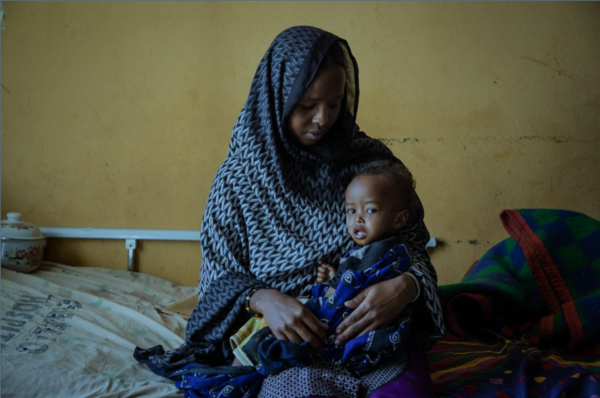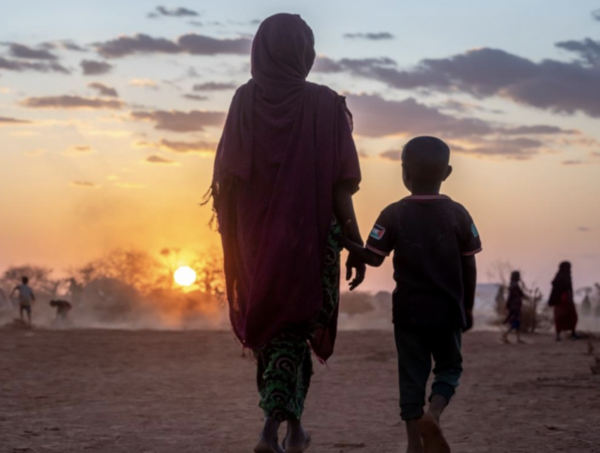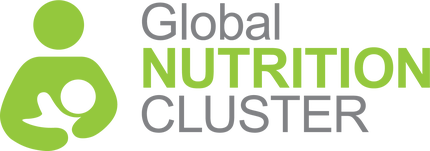Request support on coordination, information management, integration for nutrition outcomes or technical nutrition in emergencies assistance.
التماس الدعم لتنسيق التغذية وإدارة المعلومات والتغذية في حالات الطوارئ
Demander un appui pour la coordination de la nutrition, la gestion de l'information et la nutrition dans les situations d'urgence
Buscar apoyo para la coordinación de la nutrición, la gestión de la información y la nutrición en situaciones de emergencia
Solicite apoio para coordenação em nutrição, gestão de informação e nutrição em emergências
Life has changed so much. As women we are suffering a lot! Gender perspective for an improved multisectoral nutrition centric humanitarian response in Ethiopia
Up until the war started in northern Ethiopia, Melat (not her real name) a 22-year-old woman from Irob, led a normal life with her husband and her two-year-old daughter and was studying accounting on the side while working as a retailer. While escaping attacks to a neighboring village, she was raped for 14 days, despite her pleas at least to breastfeed her daughter.
In Dubluk village located in the southern part of the country, an area dramatically affected by drought, a member of the community named Guyyatu (not her real name), tells nutrition staff that all the livestock have died, and they were forced to leave their home. Now living in an IDP site she tells nutrition workers, “We are pastoralists today and tomorrow2. We have lost our way of life. Even if it rains, we still can't farm as we have nothing to farm here. If we had our animals, we would go home.” The woman next to her states, “The tents are getting older. There is no protection from the cold. Many of us are very old. We are strong pastoralists. But we are in trouble."3
|
Life has changed so much in the last years for communities, women, and children in Ethiopia. Significant changes were observed in the roles and responsibilities of men and women both in war and drought affected communities. In Borena, a key informant respondent articulated that ' there is a total shift to livestock raring activities due to loss of cattle. Most men are spending their days outside searching for water to their cattle'. A woman respondent has added -“We are still responsible to undertake all household chores. Yet, significant number of us had also started to participate in income generating activity mainly collecting wood for sale. Some of us engage in petty trading. This has increased our daily time span spent on working. We delegate 14 hours of our day to perform all the activities. We are not able to care for our health as well as attend the available health services properly. We also compromise childcare activity as we are duly concentrated in both income generating activities and other household chores”. The conflict in northern Ethiopia has affected all people regardless of gender or age but women, children, the older people, those with disabilities, and marginalized groups are especially vulnerable. Conflict has led to widespread loss of livelihoods resulting in increased poverty and food insecurity creating and incredibly worrying increase of undernutrition among all women, affecting both pregnant and not pregnant women nearly equally. Particularly at risk are women and child-headed households, which are increasing, caused by high rates death of male family members as a result of the conflict or due to family separation from men migrating for work or joining armed groups. There are widespread reports of a high numbers of attempts of suicide among adolescent boys and girls. |
Pre-existing gender inequalities have increased, making it more difficult for some groups to access assistance than others. At the same time, changes in employment conditions have led to some men, women, girls, and boys to take on non-traditional gender roles.
Gender roles in households have shifted as a result and some men and women have taken on non-traditional gender roles such as housekeeping plus infant care by men and generating income activities have been taken on by women, which cause increased calorie and nutrition needs. Inadequate and insufficient nutrition affects all populations with pregnant and lactating women, children under five, and people with HIV+ most at risk.
The division of labour in the household puts heavy responsibility on the women and girls. In drought affected areas, women like Guyyatu have a high workload that includes cooking, cleaning, gathering water and fetching firewood which can take up to seven hours a day in some cases. When women’s workload is the highest, a mother is less available for her children, which has an impact on feeding practices as well as on children’s stimulation and safety. In addition, excessive energy expenditure in the absence of increased caloric intake can result in poor maternal nutritional status.
“As women we are suffering a lot." Guyyatu confirms in Dubluk IDP site, Borena
Women are responsible for gathering firewood, water, and going to the market if available. This heavy workload away from the home requires women to leave children with neighbors when collecting water or firewood for long periods of time. Substance use among men, mainly a type of homemade alcohol, was also noted and there was yet to be humanitarian or social actors providing support for this challenge. The women noted that men would use the money given from humanitarian organisations to buy this alcohol, sometimes instead of food for the family. Mental health and role in community, is also affected men, as they are the “providers” as their key role in livelihoods and income generation and how with the drought this was now gone.

Orbate, a woman whose child is being treated of severe acute malnutrition in a stabilization center, states: I lost all my 20 cattle and many sheeps. I am left with one sheep and now I don’t know what to feed my children anymore.
The affected population that suffers the ravages of crises then resorts to adaptation and coping mechanisms. In the case of Melat and women in conflict affected areas, they reduce food intake that affects women first and most severely, selling nonfood items to buy food if not available and begging and exchanging sex for food.
Rural households adopt interdependent risk coping strategies. Consumption of less-preferred and less-expensive food, borrowing food from relatives and friends, consume seed stock, and feeding children first appear to be the major ex-post risk coping strategies. These risk coping mechanisms are determined by resource holdings and income levels of the rural households, their access to market and credit, and can be shaped by their socio-demographic characteristics.
Children are also missing out on an education due to the drought. There is a lack of space in classrooms, not enough teachers and children do not even have something as simple as clothing to wear to school. It is known that children who are out of school are at risk of exploitation or are being pushed into dangerous coping mechanisms.
South-eastern Ethiopia where Borena region is located faced last year the worst drought in 40 years after an unprecedented fifth failed rainy season. Severe drought conditions have destroyed crops and dried up water sources, leading to widespread livestock deaths and forcing hundreds of thousands of people to give up their traditional pastoral lifestyle. Drought is one of the key drivers of increased malnutrition in southern Ethiopia, enhanced by structural factors, including the low levels of education of women and girls, inadequate health infrastructure, a weak economic landscape, low immunization rates, land policies, and flawed systems of governance. Drought and the resulting displacement leave young girls especially vulnerable to sexual and physical violence and coercion, child labor, and early marriage. There have dramatic increased cases of Gender Based Violence including intimate partner violence, sexual harassment, coercion, assault, and rape. It was suggested that the risk of gender-based violence increases in drought-affected areas as women and girls are forced to travel far distances to fetch water, while in other cases they are often left alone while family members are away looking for food or livelihood.
Melat and Guyyatu are examples of women facing multiple crisis in Ethiopia and the humanitarian workers, actors and strategies are defined and conceptualized to tailor affected population needs. But are we accountable enough to them in terms of gender and nutrition sensibility and needs?

Several studies and analyses focused on gender and nutrition show that despite humanitarian response efforts, there is no priority in the gender transformative for nutrition agenda and there are gaps in the risks mitigations that need to be addressed. Some of the most recent recommendations include:
- Need for stronger leadership and coordination within gender and nutrition,
- Focus on resource mobilisation and prioritisation of gender within nutrition programmes, including mobilising more resources
- Stronger accountability to affected people by nutrition actors,
- strengthening capacity of gender and gender-based violence risk mitigation for nutrition actors
- sensitising other sectors on the linkages between gender and nutrition,
- ensuring meaningful participation of local and national organisations especially women rights and women and indigenous led organisations,
- and a better understanding and response to vulnerabilities especially the elderly, people living with disabilities, and those who have diverse genders.
Local social security networks play a key role in some areas like Borena to overcome food shortage. All the efforts from humanitarian partners in fostering a common understanding of the critical role of community and applying gender lens in the nutrition humanitarian response, " and ensure a collective approach will be a critical step towards operationalizing wasting prevention in Ethiopia.
This article was written by Ines Lezama, Nutrition Cluster Coordinator/ENCU team lead Ethiopia, UNICEF, ilezama@unicef.org, encu.addis.advocacy@gmail.com; Hanna Hailu, gender focal point for nutrition cluster, GOAL Ethiopia hannah@et.goal.ie; Brooke Bauer, MIYCN and Gender Advisor, GNC Technical Alliance, Action Against Hunger, bbauer@actionagainsthunger.ca
2 The Borana are pastoralists, though a few also grow crops
3 Focus group discussions- Gender and nutrition analysis in Borena
